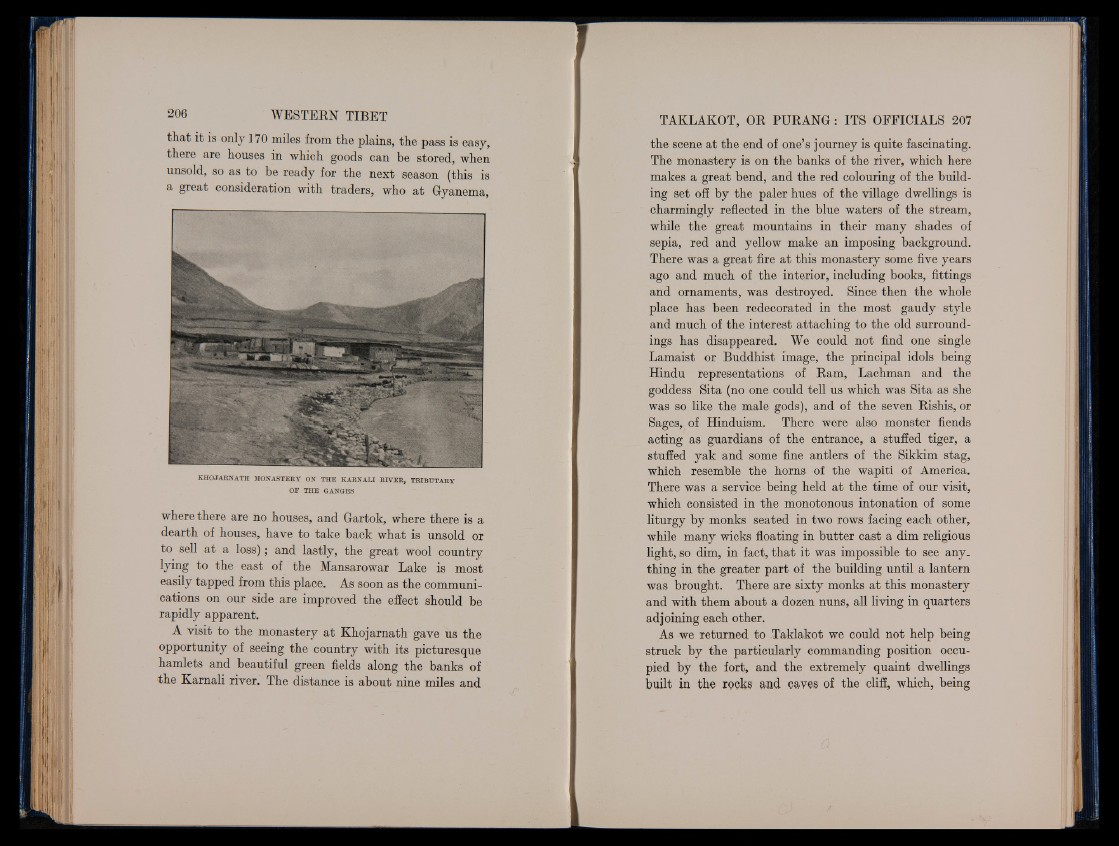
that it is only 170 miles from the plains, the pass is easy,
there are houses in which goods can be stored, when
unsold, so as to be ready for the next season (this is
a great consideration with traders, who at Gyanema,
KHOJARNATH MONASTERY ON THE KARNALI RIVER, TRIBUTARY
OF THE GANGES
where there are no houses, and Gartok, where there is a
dearth of houses, have to take back what is unsold or
to sell at a loss) ; and lastly, the great wool country
lying to the east of the Mansarowar Lake is most
easily tapped from this place. As soon as the communications
on our side are improved the effect should be
rapidly apparent.
A visit to the monastery at Khojarnath gave us the
opportunity of seeing the country with its picturesque
hamlets and beautiful green fields along the banks of
the Karnali river. The distance is about nine miles and
the scene at the end of one’s journey is quite fascinating.
The monastery is on the banks of the river, which here
makes a great bend, and the red colouring of the building
set ofE by the paler hues of the village dwellings is
charmingly reflected in the blue waters of the stream,
while the great mountains in their many shades of
sepia, red and yellow make an imposing background.
There was a great fire at this monastery some five years
ago and much of the interior, including books, fittings
and ornaments, was destroyed. Since then the whole
place has been redecorated in the most gaudy style
and much of the interest attaching to the old surroundings
has disappeared. We could not find one single
Lamaist or Buddhist image, the principal idols being
Hindu representations of Ram, Lachman and the
goddess Sita (no one could tell us which was Sita as she
was so like the male gods), and of the seven Rishis, or
Sages, of Hinduism. There were also monster fiends
acting as guardians of the entrance, a stuffed tiger, a
stuffed yak and some fine antlers of the Sikkim stag,
which resemble the horns of the wapiti of America.
There was a service being held at the time of our visit,
which consisted in the monotonous intonation of some
liturgy by monks seated in two rows facing each other,
while many wicks floating in butter cast a dim religious
light, so dim, in fact, that it was impossible to see anything
in the greater part of the building until a lantern
was brought. There are sixty monks at this monastery
and with them about a dozen nuns, all living in quarters
adjoining each other.
As we returned to Taklakot we could not help being
struck by the particularly commanding position occupied
by the fort, and the extremely quaint dwellings
built in the rocks and caves of the cliff, which, being